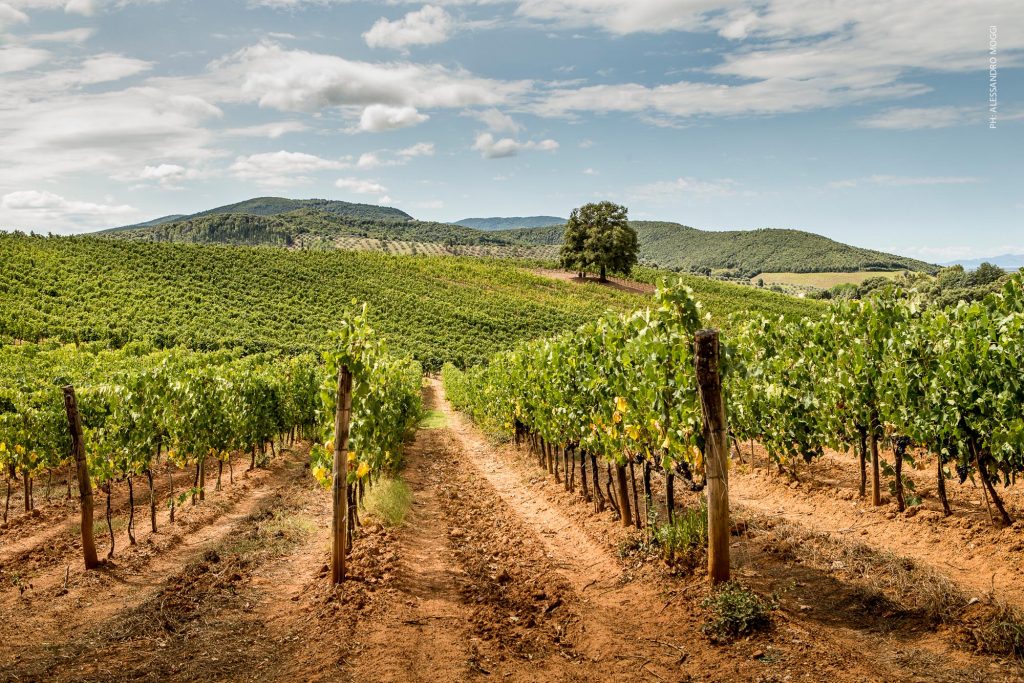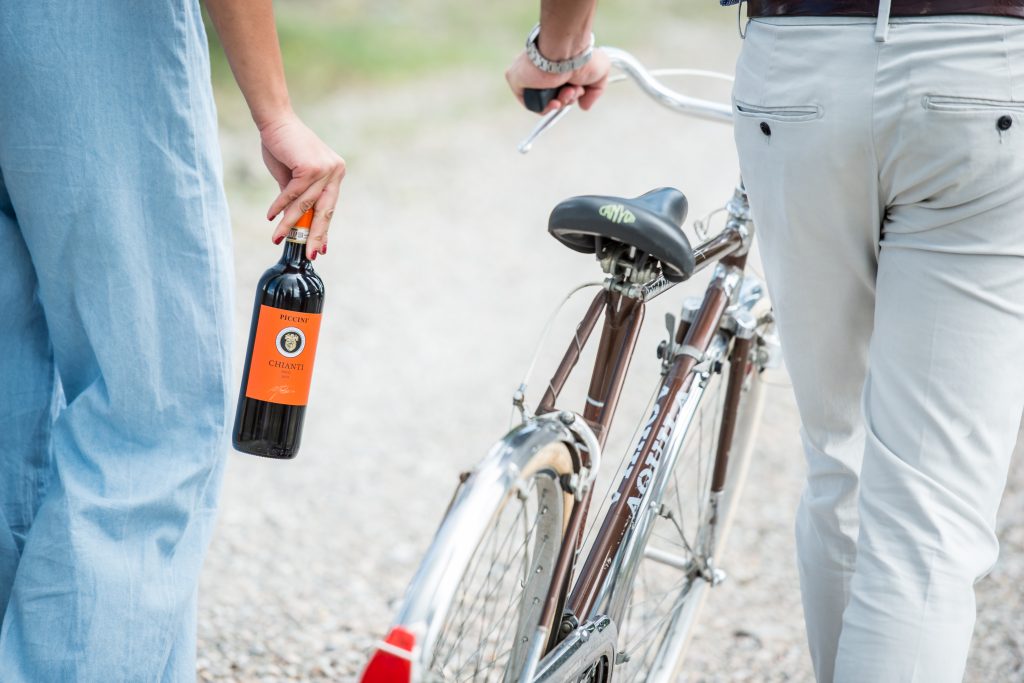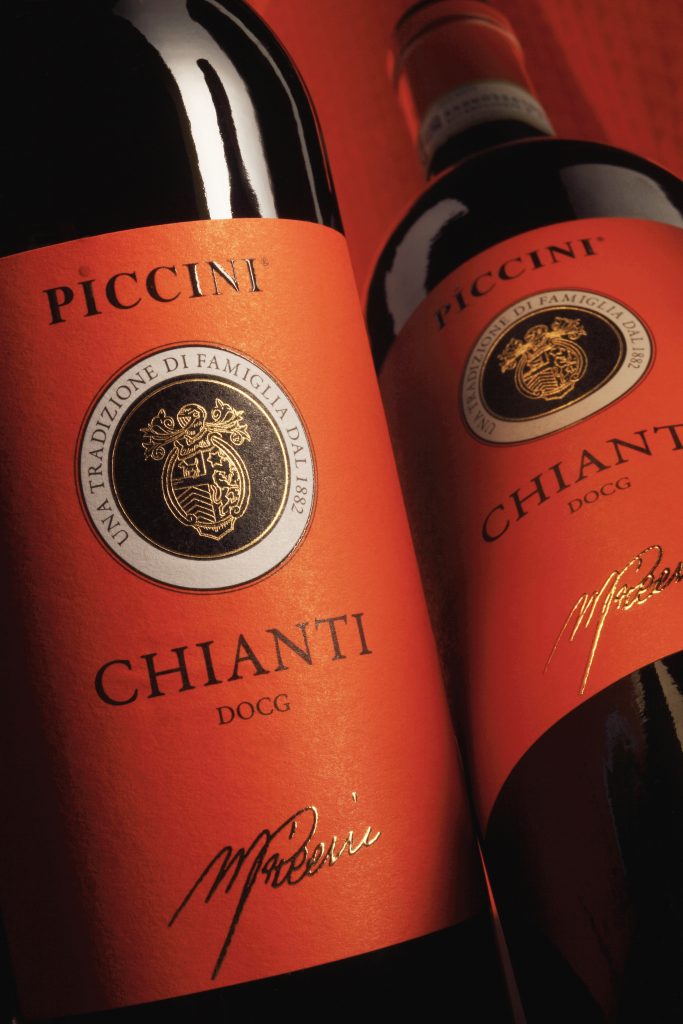Everything you needed to know about Chianti
(But were afraid to ask)
Is Chianti one of the world’s best-known wines? Name-checked throughout history, the wine we now know as Chianti can trace its roots back as far as the Etruscan period in the eight century BC. The origins of the name are not confirmed but may come from the Etruscan word for water, clante, which was also the name of an important local family at that time. Other sources suggest it comes from the Latin clango meaning noise, from the sound of weapons and trumpets from hunts in the forests that covered the area we now know as Tuscany.
Winemaking traditions continued in this region throughout the Roman Empire, survived the warring factions during the early Middle Ages and re-emerged relatively unscathed around the 13th century when written documents first mention Chianti as a wine production area. Wealthy Florentine families staked their claims on land during the Renaissance, building country villas across the region and dedicating time to the improvement of agriculture and vineyards. The Grand Duke Cosimo III was the first to outline the production areas boundaries of the Chianti region in 1716 – this would become the DOCG classification.

Today the Chianti DOCG covers a large portion of central Tuscany, stretching across the provinces of Siena, Florence, Arezzo, Pisa, Pistoia and Prato. This large expanse is linked by one predominant grape variety; Sangiovese, grown on galestro (clay-schist) and alberese (carbonate sedimentary rock) soils. The region is characterised by a continental climate with cold winters and warm summers, with the best vineyards found on the higher altitude areas along the central backbone of the region.

Chianti has suffered its own identity crisis over the past decades as the region struggled to deal with the huge variations in quality and style. DOCG rules were adapted: this included banning the use of white grapes in the blend and setting minimum requirements for Sangiovese as the predominant grape. The rise of the Super Tuscans lead to the inclusion of Merlot, Cabernet and Syrah as permitted grapes in the blend, although this decision was not universally popular.
Alongside the subtle changes in grape blend, there is a wide array of local classifications aiming to pinpoint stylistic variations, alongside a quality hierarchy that confuses as much as it guides. Persevere however, and you’ll find that Chianti is so much more than a straw wrapped fiasco.
Here are the six main Chianti categories and when to buy them.
- Chianti DOCG
Established in 1984, this is the original classification that covers the whole region. The wine must be a minimum of 70% Sangiovese with a list of other permitted grapes for the remaining 30%: traditionally including Colorino and Canaiolo but also now Cabernet Sauvignon and Merlot. The wine must be aged for a minimum 6 months, although not necessarily in barrel. This is your best bet for lighter, juicy, fresh wines, ready for immediate drinking with a slice or two of pizza – think Piccini Chianti Orange for a modern take on the category. Subzones of the DOCG such as Rufina and Colli Senesi tend to have longer ageing requirements and can be more expensive as a result.

- Chianti Superiore DOCG
The sub-category Chianti Superiore covers the whole of the Chianti region but from lower yields and aged for a minimum of 9-12 months – with this you get more smoothness than a straightforward Chianti, making it more suitable for pasta al’pomodoro or a beef ragu. Great value.
- Chianti Classico DOCG
The heart of the Chianti region, the Classico DOCG stretches between the towns of Florence in the north and Siena in the south across the rolling hills of the region. The modern Classico DOCG split off from the wider Chianti DOCG in 1996. You’ll find the historical mascot of the Classico region, the Gallo Nero, or black rooster, prominent on the bottle. Sangiovese must make up at least 80% of the total blend, with a slightly higher minimum ABV of 12% than in the wider Chianti region. Wines must be aged for a minimum of 1 year and tend to be slightly richer and more concentrated as a result – enjoy with hearty stews or cheeses.

- Chianti (Classico) Riserva DOCG
Riserva wines must be aged for a minimum of two years in barrel before release. In general wines are now aged in larger and older oak barrels which allow for a gentler ageing that new oak. Flavours provided by the longer ageing tend to be more complex, and work well with dishes such as the classic steak Bistecca Fiorentina, with the Sangiovese grape’s inherent fresh acidity acting as the perfect foil for the protein.
- Gran Selezione DOCG
This is the highest classification within Chianti Classico, introduced in 2014 and requiring a minimum 3 years ageing before release, of which 30 months must be in barrel. The grapes must come from the estate’s own vineyards and undergo a tasting panel before release. Not every vintage qualifies as a Gran Selezione, so it goes without saying that these are special wines, generally with a price tag to boot. Save it for a very special occasion or hide away for a few years if you can bear it…
- Chianti Governo DOCG
Reviving an ancient tradition in Chianti, Governo wines are produced by the addition of partially dried grapes to a base wine to start a second fermentation. In the past this was used to stabilise the wine and help complete a stuck fermentation. Nowadays it is used to create a slightly richer style that will be either higher in alcohol content or residual sugar, and often no more expensive that as standard Chianti. Try this with a platter of charcuterie or salumi where the combination of richer flavours and fresh acidity help cut through the oiliness of the meats. Buon Appetito!





